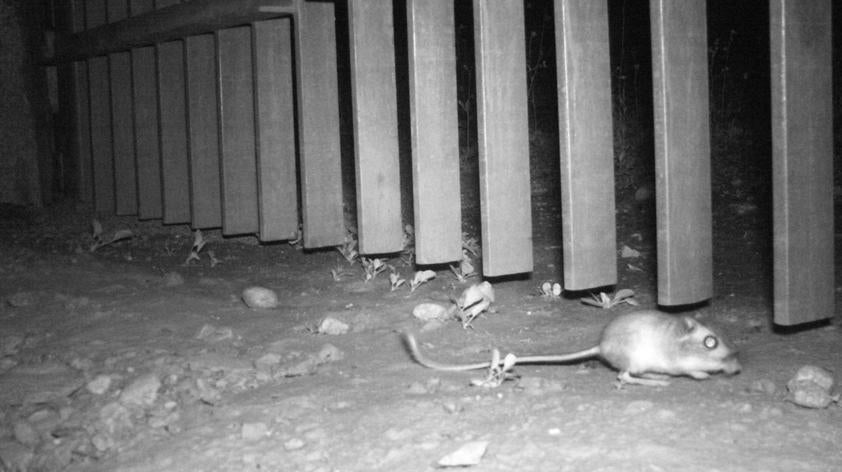
A light at the end of the culvert
Habitat loss is one of the most common threats to all species around the world. Even small areas of habitat loss result in habitat fragmentation and loss of connectivity. As a result, species are left with patches of habitat that are small and not suitable for long term survival.
Connecting these remaining portions of habitat is a challenge but is crucial for the survival of isolated populations. As I’m sure most of you have seen in the news (or on the internet), biologists and engineers across the globe are coming up with unique ideas on how to help animals, in simplicity, cross roads. Whether they are above or below ground, wildlife crossings are becoming a more common tool to help mitigate the impacts of habitat fragmentation.
The wildlife crossings that our team has been monitoring are below ground; more specifically they are 4 culverts under a two-lane road in San Bernardino County, Ca. When a new portion of road was built years ago, it bisected a section of critical habitat for the endangered San Bernardino kangaroo rat (SBKR). Because this area was designated as critical habitat they had to build a set of culverts to allow the kangaroo rat to move between two sections of habitat (for more culvert details see my previous blog).
SBKR are endangered primarily because of habitat loss. 98% of their historic range is gone and there are only small patches of suitable habitat left. Any areas, regardless of size, need to be saved to try and ensure the species survival in the future.
Our team is starting the fifth and final year of monitoring these culverts. We monitor them with remote cameras that are placed throughout each culvert. They take pictures during night and day whenever they are triggered by motion. Then I get to crawl through the 2ft tall, 60ft long culverts to collect all of the data.
We have gone through THOUSANDS of photos over the last 4 years and have found a large amount of mammals, birds, reptiles, and even a few amphibians. However, we still have not seen an SBKR. We did have a positive picture of a kangaroo rat using the culvert after our first year of monitoring, but after surveying the area we confirmed SBKR were not there.
However, the two pictures we captured of this kangaroo rat were from far away and it was very difficult to tell if it was using the culvert or just hanging around the entrance.
After going through photos from this past year, I am happy to say that we have multiple visits from a kangaroo rat in half of our culverts!
We can clearly see that the kangaroo rat is entering and traveling though the entire 60 ft until it reaches the other side of the road. It is captured on multiple cameras on multiple days visiting and using the culverts. Based on the surrounding habitat type and the general size of this kangaroo rat, we do not think it’s an SBKR but a different species of kangaroo rat that is present in that area.
This is very exciting news! Even though it’s not our target species, we now know that kangaroo rats will use wildlife crossings to travel to surrounding habitats. This has huge implications for future planning of endangered kangaroo rats. It can be the tool we need to connect isolated populations that have been bisected by roads and development.
The great thing about wildlife crossings is that they benefit multiple species even if they were intentionally built for one. When our 5 years of monitoring is done, the culverts will still be there allowing animals to safely move between habitats for years to come.













